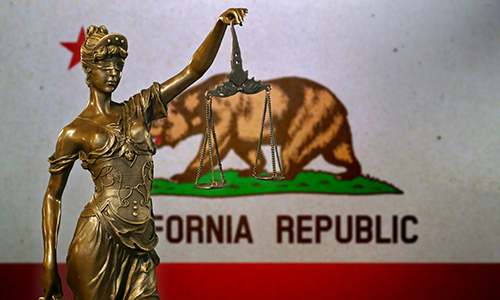
Expert Opinion
March 25, 2020
Imagine a legal sector neatly divided into two groups: the Rule Makers and the Risk Takers. With evidence piling up that the legal market is not working for ordinary citizens, the Rule Makers come together to evaluate possible changes. After the new rules are enacted, the burden shifts to the Risk Takers to build out workable solutions.
March 24, 2020
In a new white paper published on March 22, 11 legal scholars stress the need for jurisdictions to consider alternative licensing options for the Class of 2020 and others slated to take the bar exam this summer, in light of restrictions in place due to the COVID-19 pandemic.
March 23, 2020
In a recent op-ed, Joanne Slotnik, former executive director of the Utah Judicial Performance Evaluation Commission, touts the state’s successful judicial selection system, which includes robust performance evaluation for judges and retention elections by the public.
March 20, 2020
The ABA has created a task force to identify legal needs arising from the COVID-19 pandemic and to make recommendations to address them. Meanwhile, state and federal courts continue to rapidly respond to the impacts of the virus.
-
Zachariah DeMeola
-
Natalie Anne Knowlton
March 18, 2020
On February 13, the Arizona Task Force on the Delivery of Legal Services filed a petition with the Arizona Supreme Court to eliminate Ethical Rule 5.4. Instead, the petition requests that the court adopt a framework for regulating what’s known as an alternative business structure.

Expert Opinion
March 16, 2020
In January 2019, IAALS published recommendations for improving dispositive motions practice in state and federal courts, calling for a new paradigm for motion practice in the United States. Now, judges around the country are answering the call.

Expert Opinion
March 13, 2020
On Thursday, March 12, the State Bar of California Trustees voted to postpone passing the motion to explore the development of a regulatory sandbox to May. In my eyes, every day, hour, or minute of delay leads to bad legal outcomes for Californians. Our legal system is in crisis. Now, as a community, we have to turn our kinetic access-to-justice energy into focused action.
March 13, 2020
As the number of cases of COVID-19 in the United States rises, both state and federal courts are preparing for how they will (or won’t) continue operating should more people quarantine and many other functions of public life temporarily shut down.

Annual Report
March 12, 2020
People look to our legal system for help in matters that affect their rights, their families, their businesses, and the most intimate aspects of their lives. But, for too long and for too many, the courthouse doors seem closed—and justice out of reach. IAALS is changing that. We are proud to present you with our 2019 Annual Report, which highlights our work and accomplishments toward ensuring that everyone has access to justice we can believe in.

Expert Opinion
March 11, 2020
From my perspective as the director of a law school innovation lab, legal education is disengaged from the regulatory reform effort: only a handful of legal academics have chimed in on regulatory reform or been involved in task force efforts. But legal education should join the conversation and prepare for the changes ahead, for several reasons.
March 6, 2020
In today’s increasingly busy and connected world, electronic notifications play a significant role in keeping us up to date. One would expect that due to the serious nature of court proceedings that the courts would be up-to-date with messaging or other communication capabilities, but unfortunately that is not the case. However, many courts are beginning to change that reality.

Expert Opinion
-
Brittany Kauffman
-
Michael Houlberg
March 2, 2020
To address the challenges posed by the rising number of debt collection cases in our state courts—including high rates of self-represented litigants and default judgments—IAALS and the National Center for State Courts have released a new white paper that presents a model approach to reform in these cases.
